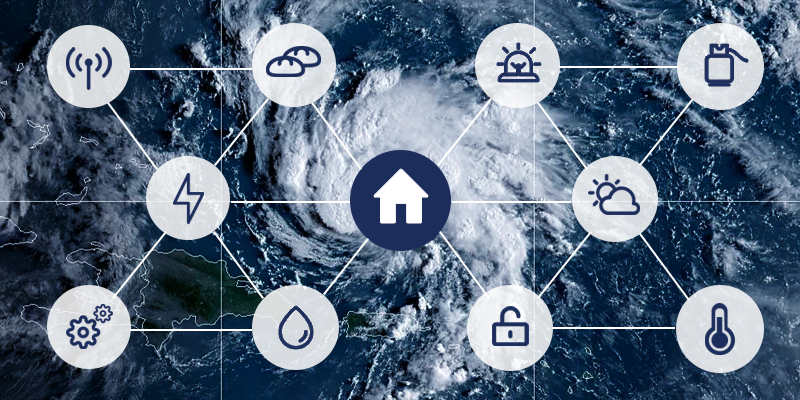Mitigating Disasters and Saving Lives With the IoT


From the fires in the Amazon to hurricane season in my home state of Florida, natural disasters continue to dominate the headlines. When you read this, my lights may be out, my computer screen dark. As I write, however, there’s no way to predict the storm’s true impact with any semblance of certainty.
But what if we could? What if we could use the technology inside our homes, our businesses, and our pockets to better prepare for—and recover from—disasters? The Internet of Things (IoT) may hold the answers to those questions.
The IoT describes a vast network of interconnected devices that already exists out in the world. Most of these smart devices—from phones to fridges—are not designed for disaster mitigation, but their functionality hints at breakthroughs in the world of sensors, relays, and systems. Many companies, Amzur Technologies included, are developing standalone sensor tech for the sole purpose of data collection.
Although Amzur is focusing on energy management applications, there is potential to use these technologies to manage emergency situations as well. For example, sensors exist that can be mounted fcvon trees to measure smoke, temperature and humidity levels, allowing firefighters to detect forest fires before they get out of control. Others can float in the water, providing early warning of floods.
Creating a web of these sensors could provide unprecedented early warning data for a variety of natural disasters. But properly using that data to mitigate risks presents another set of challenges.
Sensors and relays are useless unless the data finds the right people. This is already happening in certain cases—for example, some stores are using IoT data to increase stock leading up to hurricane season. Emergency management, however, seldom seems to be a high-priority destination for this data. We need to be able to shift those priorities in times of need.
Amzur, for instance, is designing end-to-end IoT platforms for local and global energy management, which allows building owners, utility companies and more to gather real-time operational data so they can optimize energy output. How can this help during an emergency? Simple: When the power goes out, an IoT-optimized utility company will be able to turn it back on that much faster.
But this brings us to yet another problem looming on the horizon—one that worsens with each passing year and every devastating disaster. Our infrastructure is aging, presenting a huge obstacle to IoT improvements.
Major storms take down power lines. It’s a fact of life. That’s why we want to modernize the grid, burying those lines underground, where storms can’t get to them. That way, utility companies can provide continuous power, ensuring emergency services are available when you need them.
But we can’t stop there. Imagine a world where everything is connected. Where each building is linked by state-of-the-art technology that can warn you if you’re low on emergency rations or your house is structurally unsound. Imagine a home that alerts first responders directly in the case of a fire, break-in, or disaster, telling those who can help precisely what needs to be done.
This future may sound like science fiction, but every step we take toward it is another step closer to a reality where fewer lives and homes are lost to natural disasters.
Rani Nemani, president and founding partner of Amzur Technologies, has more than 20 years of experience in programming, talent acquisition, and technology. Nemani is a problem-solver, constantly looking for the most effective way to meet a need. When she and Bala Nemani launched Amzur Technologies in 2004, their combined vision produced cutting-edge software that fulfilled a variety of needs in global talent solutions.
